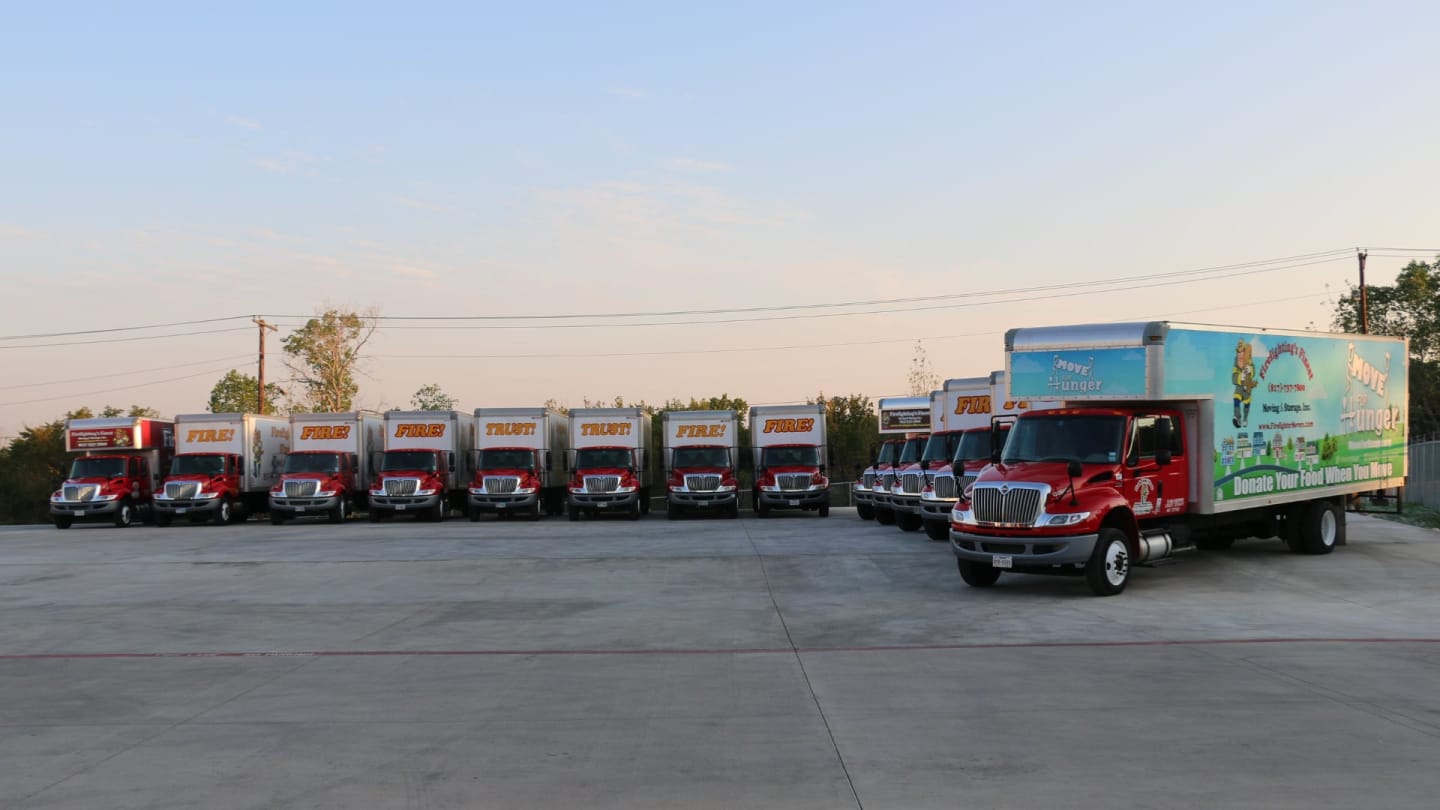What’s the most difficult part of moving? If you said heavy lifting, you’re not wrong. Coming in at a close second, though, is packing boxes. Packing boxes correctly, so that your belongings aren’t damaged and your back is not strained, can be complicated. Don’t worry! The experts at Firefighting’s Finest Moving & Storage have helpful advice for you that will make packing your boxes a breeze.
No. 1 – Pare Down Your Stuff
It’s wise to get rid of as many of your possessions as possible before you begin packing them into boxes. If this seems extreme, think about the time and money you’ll save by not packing things you don’t really need or want and dragging them to your new home. Make four piles: re-home, donate, recycle, and throw away. Going room to room, sort everything you’re not taking with you into one of those piles before you begin to pack.
No. 2 – Gather the Right Supplies
You know you’ll need boxes, tape, markers, bubble wrap, and packing paper, but before you ever pick up a box or a roll of tape, take inventory of your belongings to determine the quantity of packing supplies your move will require. How large is your space? How full of stuff is it? Struggling to come up with a good picture of how many boxes you need? Moving.com has a helpful box calculator to help you figure it out. Put your boxes in a central location and pack your other moving supplies into a bag or basket that you can carry with you from room to room.
No. 3 – Get Your Boxes Ready
The right boxes are important when you’re packing all your worldly possessions. While it might be tempting to pick up boxes from behind a liquor store or supermarket, it may not be the best choice. Boxes that have stored food and beverages are likely to attract cockroaches and other pests. A better option is to check on neighborhood sites to find people who have recently moved and want to get rid of their boxes. If you can afford it, though, go ahead and buy new boxes. You’ll be able to purchase exactly the boxes you need, and that will help your packing go more smoothly. Set up your boxes securely, lining up the sides and taping them with two layers of tape, plus a perpendicular layer for added strength. Once they’re set up, pad the bottom of each box to build a strong foundation for your things. Each time you finish packing a box, put in an extra layer of padding before closing it. Once it’s closed, the box should feel firm when you push down on it; if it doesn’t, add more padding.
No. 4 – Wrap Things Correctly
Err on the side of too much cushion rather than too little. You don’t want to skimp on the padding and find that your favorite things have broken in the move. Fortunately, you don’t have to only use packing paper or bubble wrap for this task. Raid your own linen closet for towels, washcloths, sheets, blankets, and pillowcases to help protect your treasures on the way to your new home.
No. 5 – Choose the Right Box for Each Job
Use small boxes for heavy things such as books and canned goods, or easily grouped items like the things in your junk drawer. Invest in wardrobe boxes to transport your clothing easily and safely, as well as carrying awkward large items like rakes or sporting equipment. Use medium sized boxes for things such as pots and pans or toys. Don’t overstuff them because you can break the boxes or strain your back. Spread out very heavy items into separate boxes and fill in the empty space with lighter things like stuffed animals
No. 6 – Know the Right Way to Pack Dishes
Dishes require special handling, and it pays to take the time to learn the correct packing methods to protect your dinnerware. It doesn’t have to be difficult, especially if you buy a dish box, specially made for dishes, and dish sleeves, which wrap the plates and bowls in foam-like material. Stack plates vertically, rather than sitting on top of each other, and make sure there’s enough packing paper and other padding to keep them from jostling around in the box
No. 7 – Take Steps to Prevent Leaks
If you don’t effectively seal up your liquids, you could end up with a disastrous mess on your hands by the time you reach your destination. To prevent this from happening, take the lid off each open container and put a layer of plastic wrap across the opening before putting the lid back on. Wrap more plastic wrap around the outside of the lid and place each container in its own plastic zipper bag for extra protection.
No. 8 – Label Everything
At the very least, write the name of the room that each box goes in on the outside of the box. If you’re someone who tends to pack a lot of random things together, you’re better off writing a full inventory of each box on the outside of it. You might also consider color coding your boxes with different colored duct tape so that you can see at a glance where the box should go in your new house.
No 9. – Pack an Essentials Box
This box should contain all the items you’ll need right away, including things like medications, important documents, and chargers for your electronics. Pack an overnight bag for each family member and carry those bags and the essentials box with you rather than putting them on the moving truck.
When it’s time to move, it’s time to call Firefighting’s Finest Moving & Storage. We are dedicated to providing efficient, safe, and professional commercial and home moving services, as the moving partner you can rely on. Founded in 2001 by two off-duty firefighters, we’ve grown to serve not only the Dallas/Fort Worth area, but also Houston and Austin as well. A locally-owned-and-operated business, we exceed all state and federal requirements for a moving company and can handle all of your moving needs. Call 844-715-6625 or visit our website for an estimate.








